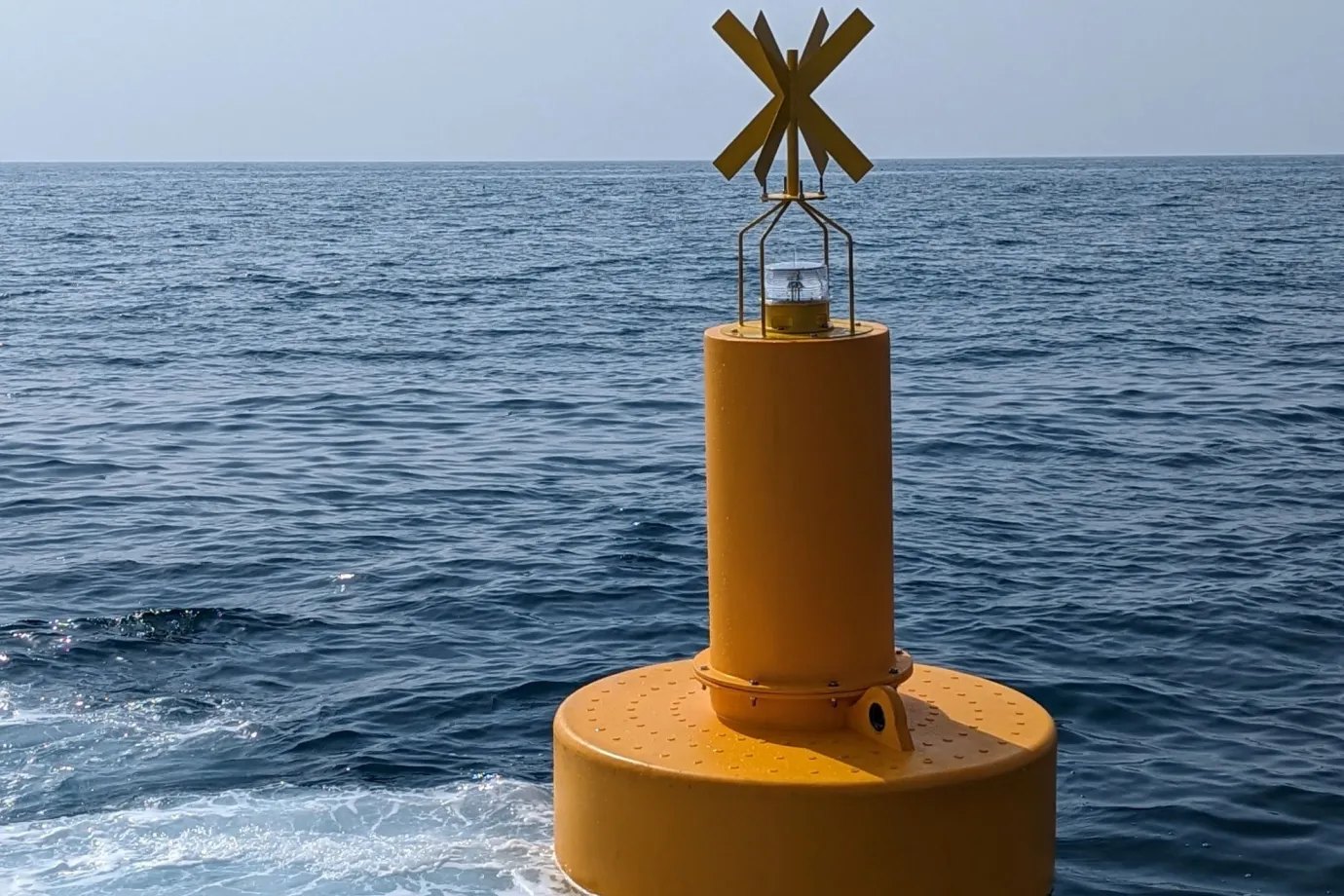Ballast plays an essential role in the stability of railway track systems. A conventional double-track line contains about 4000 m3 of ballast per kilometer, depending on the track type and the lines’ spacing. The economic handling and maintenance managing these enormous quantities of material is one of the main concerns of the railway industries.
Track stability is highly dependent on the mechanical condition of the ballast. The existing ballast maintenance approaches rely on track geometry conditions (such as track profile), which do not sufficiently reflect the ballast’s mechanical behavior. Specifically, the ballast’s long-term behavior (i.e., the ballast’s potential for degradation) has been omitted. The current ballast maintenance approach is questionable, which makes it imperative to develop a comprehensive and practical ballast condition assessment. The development of two ballast condition indices based on the degree of ballast geometry degradation (BGI) and the degree of ballast fouling (BFI) as the leading indicators of ballast mechanical behavior was carried out in response to this need.
Upgrade your maintenance operations with a “ballast regulator machine” designed for efficient shaping, sweeping, and profiling of railway ballast.

What is the rail track ballast?

Track ballast (also known as crushed stone) is another important part of railroad infrastructure. It forms a track bed before railroad ties (sleepers) are laid. It is packed between the ties, below them, and around them.
Various materials have been used as track ballast, including crushed stone, washed gravel, bank run (unwashed) gravel, torpedo gravel (a mixture of coarse sand and small gravel), slag, chats, coal cinders, sand, and burnt clay. “Ballast” is a nautical term for the stones used to stabilize a ship. The appropriate thickness of a track ballast layer depends on the rails’ size and spacing, the amount of traffic on the line, and various other factors.
What is the purpose of rail track ballast?
The existence of track ballast is to protect the railway track. It does this in several ways:
1 – Holds the sleepers in place: Many trains, including cargo and passenger trains, roll daily on railway tracks. Therefore, it is unsurprising that those tracks must constantly withstand great stress and pressure. Track ballast holds the sleepers in place so they don’t move longitudinally or laterally when heavy trains roll over them. Without track ballast, those sleepers might give way under the constant pressure of passing trains.
2 – Load distribution: Trains are immensely heavy and exert massive pressure on the tracks and sleepers. Since stones in the track ballast are jagged, they interlock with each other. This way, the immense load exerted on the sleepers and track gets distributed evenly through the track ballast.
3 – Vibration dampening: Track ballast absorbs the vibrations caused by a moving train. The cushioning effect of the track ballast stones adds to the passengers’ comfort in the train.
4 – Drainage: it is critical to ensure that railway tracks are not flooded by rain or water clogging. Track ballast prevents water clogging or the accumulation of water on or around the sleepers. Without it, water would accumulate on the tracks and cause rapid rusting of their metallic parts.
5- Prevents vegetation around the tracks
6- Noise absorption
See also: “Different Types of Railway Tracks“
Which equipment is involved in railway ballast maintenance?

Railroad ballast maintenance has long been an essential part of railroading, although it has not always been as mechanized as it is today. Several types of equipment are involved in ballast maintenance, and we will discuss some of the vital equipment here.
1- BALLAST REGULATOR: The ballast regulator is a piece of railway ballast maintenance equipment used to shape and distribute the gravel track ballast that supports the ties in rail tracks. They are often used in conjunction with ballast tampers.
See also: “Ballast Regulator Machine Operating Principles“
2- SAND REMOVER: The sand remover is equipped with an articulating sand transfer plow, benching-type sand wings, and a broom/conveyor attachment for sand removal from the track area for ballast maintenance. Articulating sand transfer plow removes sand up to 1.5 meters on either side of the track centerline. Sand wings remove sand up to four meters on either side of the track centerline.
3- BRUSH CUTTER: The brush cutter clears brush and overhanging branches from the railroad right of way.
4- PLATE SWEEPER: The plate sweeper is a heavy-duty brush capable of removing all ballast and debris from the tie plate areas after new tie insertion in high-speed gangs.
Indices to railway ballast maintenance

Railway ballast is critical in maintaining track stability, performance, and safety. Over time, ballast undergoes wear and tear due to heavy train loads, environmental factors, and the intrusion of foreign materials. This degradation impacts its geometry and structural integrity, making regular assessment and ballast maintenance vital. To address these challenges, engineers rely on specific indices that measure and evaluate the condition of ballast.
Using well-defined indices provides an objective way to quantify ballast quality and track performance. These indices enable railway ballast maintenance teams to prioritize interventions, optimize costs, and extend the service life of tracks. Among the various methods, two indices stand out for their practical applicability and effectiveness: the Ballast Geometry Index (BGI) and the Ballast Fouling Index (BFI).
The BGI focuses on the geometric condition of the ballast layer, derived from track geometry parameters that influence overall track stability. Meanwhile, the BFI evaluates the level of contamination in the ballast, which directly affects its drainage and load-bearing capabilities. Both indices leverage modern technologies, such as ground-penetrating radar (GPR), to provide rapid and accurate assessments. The following sections delve into the methodologies and significance of these indices in ensuring railway track efficiency and safety.
1- Ballast Geometry Index (BGI)
There are several track geometry condition indices available. A few examples are the roughness index, fractal analysis index, and space curve length index in the USA, the W5-parameter in the Austrian railway, the TGI in the Indian railway, the Q index in the Swedish National Railway, and the J index in the Polish railway.
The J index is more practical and easier to use in maintenance. Track geometry parameters, including twist (T), alignment (A), gauge (G), and unevenness (U), are evaluated based on standard deviations.
The ballast geometry index was adapted from the J index. The gauge parameter has no meaningful Geometric irregularities in the ballast layer. On the other hand, deviations of the profile, alignment, and twist have dominant effects on the geometry condition of the ballast layer. Therefore, the updated geometry index for the ballast was obtained by eliminating the gauge parameter from the J index.
2- Ballast Fouling Index (BFI)
The ballast degree of fouling is the primary indicator determining the structural state of the ballast. The main sources of ballast contamination include aggregate fracture, penetration of fine particles from the underlying subgrade layer, and intrusion of fine materials from the ballast surface. The key indicator used in this work to establish a ballast structural condition index was ballast fouling. This was determined using data from the ground-penetrating radar (GPR). The GPR measures ballast conditions quickly and nondestructively. The ballast contamination level, as well as the ballast depth, can be obtained using this technique. The absorption of the GPR waves/signals (sent to the ballast) increases as the pollution of the ballast grows in the GPR technique.
To develop a ballast fouling index (BFI), engineers took four steps:
- GPR measurements were performed in a laboratory to correlate the levels of fouling (contamination degree) and the GPR output.
- Field boring tests were carried out to determine the GPR wave velocity for various types of ballast.
- The method of deriving the level of ballast fouling was developed based on an image processing of the GPR data.
- The ballast fouling index was created as a mathematical expression.
Conclusion
Effective ballast maintenance ensures railway track systems’ long-term stability, safety, and efficiency. With thousands of cubic meters of ballast supporting each kilometer of track, maintaining its condition is critical and resource-intensive for railway industries worldwide. The structural and geometric integrity of the ballast layer directly influences track performance, train operation safety, and the overall durability of railway infrastructure.
Traditional maintenance approaches often fail to adequately address ballast’s mechanical behavior, particularly its degradation over time. This highlights the need for advanced methods like the Ballast Geometry Index (BGI) and Ballast Fouling Index (BFI), which provide a more accurate and comprehensive assessment of ballast condition. These indices enable railway engineers to monitor critical parameters such as geometric irregularities and contamination levels, ensuring targeted and efficient railway ballast maintenance.
The incorporation of modern technologies, such as Ground-Penetrating Radar (GPR), has further revolutionized ballast maintenance by offering rapid, noninvasive diagnostic capabilities. This not only improves the accuracy of condition assessments but also minimizes downtime and costs associated with traditional inspection methods.
In conclusion, adopting advanced indices and technologies for railway ballast maintenance ensures better decision-making, cost optimization, and enhanced track reliability, all of which are vital for meeting the railway industry’s growing demands. Proper ballast maintenance remains a cornerstone of sustainable rail transport.
Signs include poor drainage, uneven track geometry, increased vibration, or a drop in ride quality. Modern diagnostics measure geometry irregularities and fouling levels to schedule interventions before problems become serious.
Fine particles (from rail wear, subgrade intrusion, or organic matter) block the spaces between stones, reducing drainage and altering load distribution. Maintenance options include vacuuming out fines, washing ballast, or replacing it entirely.
Tamping lifts and packs ballast under sleepers to restore alignment and level. Regulators then shape and redistribute the stones, while cleaning machines remove fouled material. Together they keep the track stable and properly drained.




